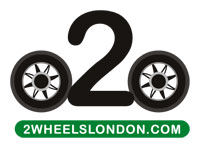Safety first, last and always - Part II
Riding a motorbike safely requires great skill, good judgement, concentration and street smarts.
Sounds simple – but we also know it’s easy to make silly mistakes that can prove deadly. Crashes happen, but what’s so sad is that most can be avoided with just a few simple changes to our riding techniques.
In this short series we’ll look at some of the principal reasons for bike crashes, and the types of roads they occur on, based on statistics from the Department for Transport. In Part I we looked at country roads and junctions. In Part II, filtering and overtaking.
Filtering
Filtering past stationary or slow moving traffic is fine – but we must do it with care. When other vehicles are closely packed together in a queue visibility for everyone is reduced, so it’s easy for other road users to miss the filtering biker.
Always remember that drivers get impatient when stuck in traffic, and if they see the other lane is moving quicker, they might be tempted to dart across to join it. What they won’t do is check their mirrors to make sure there isn’t a bike filtering by.
If that’s you, you’re unlikely to have the space or the time to react if you are riding too fast.
Go slow; the golden rule when you are filtering is to ride no more than 5-10mph faster than the traffic is moving. So if the traffic is stationary, that’s right… ride at 5-10mph!
Watch out for pedestrians, too. They will often weave in and out of traffic queues to cross the road, and could be obscured from your view if they walk in front of a taller vehicle like a van.
Overtaking
Overtaking requires a great deal of skill. We need to safely judge speed and distance, have good sightlines and a good knowledge of our bike’s acceleration.
The most important thing is good observation. Overtaking safely requires a good view of everything going on around you. If you can see the way ahead is clear, great, but don’t go just yet. Think about where another vehicle may be hidden from view: over the brow of a hill, in a dip, around a bend or approaching from a junction.
You also need to consider how the driver or rider you are overtaking, or one who is coming the other way, will react. You can’t assume they will slow down to let you in. They may do the opposite.
Finally, never overtake when approaching:
• bends
• junctions
• lay-bys
• pedestrian crossings
• hills or dips in the road
• or where there are double white lines or other signs prohibiting overtaking.
